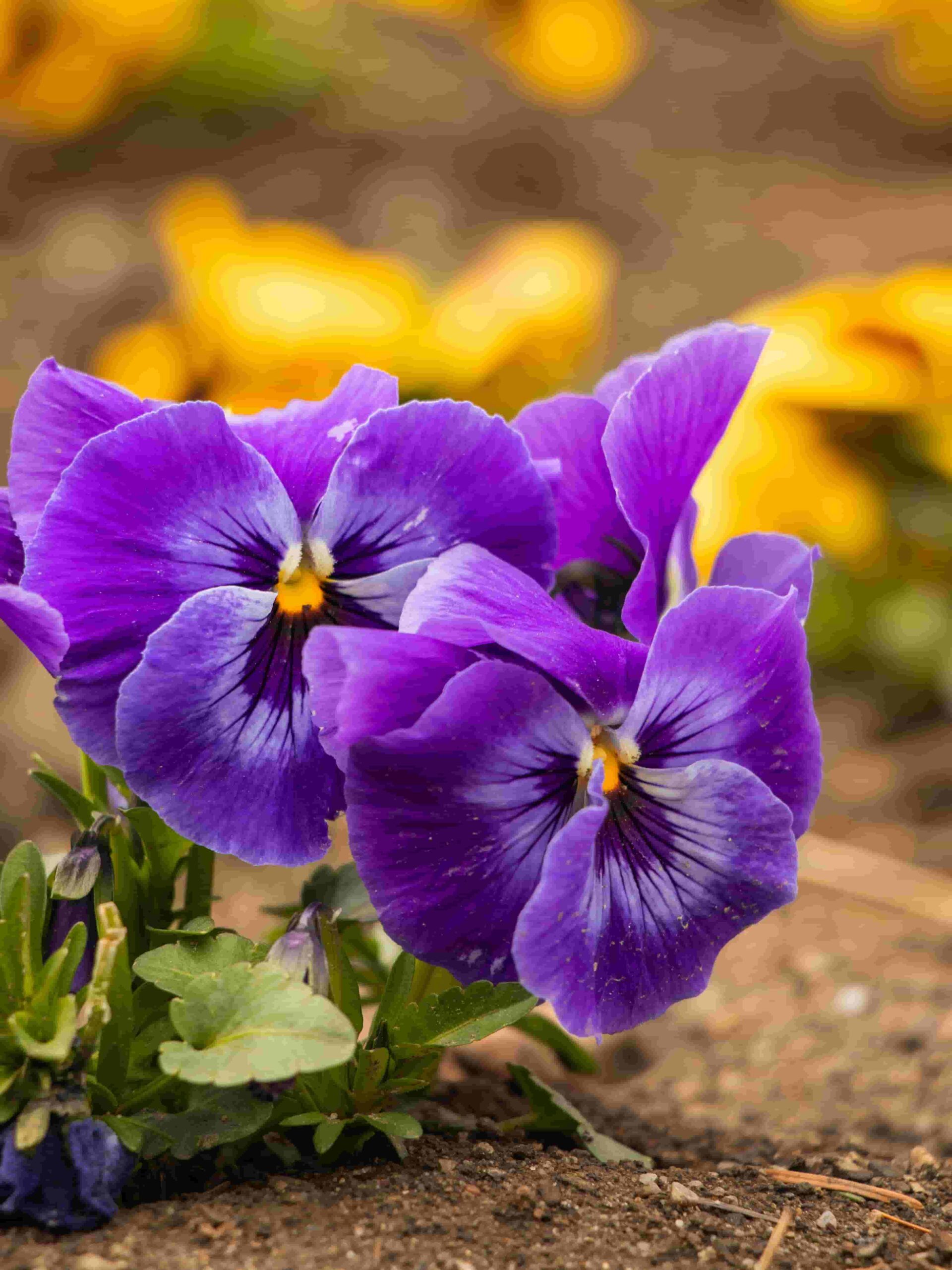Introduction
Pansies, with their vibrant colors and delicate petals, are a beloved choice for garden enthusiasts around the world. These cheerful flowers not only add a pop of color to any landscape but also bring a sense of joy and beauty. This article will go into the fascinating world of pansies, covering everything from their origins and variety to maintenance and upkeep. Whether you’re a seasoned gardener or a novice plant lover, read on to discover everything you need to know about these captivating blooms.
Table of Contents
- Introduction
- Origins of Pansies
- Popular Pansy Varieties
- Choosing the Right Location
- Preparing the Soil
- Planting Pansies
- Watering and Fertilizing
- Pansy Care and Maintenance
- Dealing with Pests and Diseases
- Propagation Methods
- Companion Planting with Pansies
- Creative Uses for Pansies
- Pansies in Containers
- Seasonal Care for Pansies
- Common Problems and Solutions
- Conclusion
- FAQs (Frequently Asked Questions)
Origins of Pansies
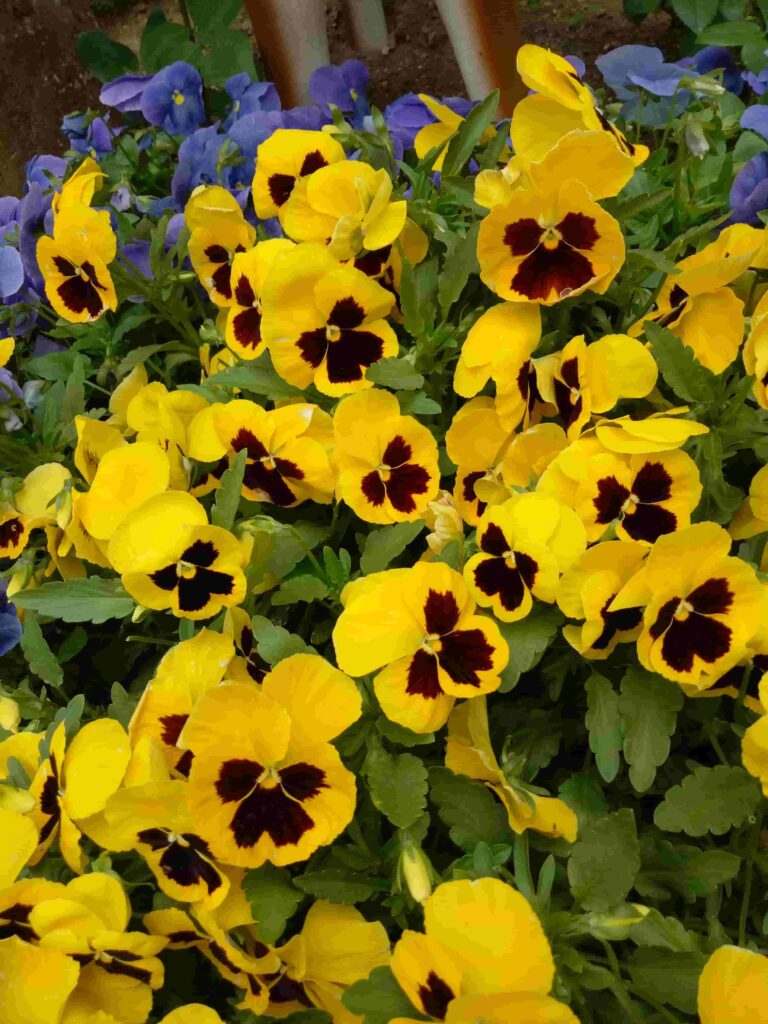
Pansies (Viola × wittrockiana) are believed to have originated from a crossbreeding of several Viola species in Europe. They were first cultivated in the early 19th century and have since become one of the most popular bedding plants worldwide. Pansy flowers are known for their unique “faces,” which are created by the dark lines on their petals. These charming flowers come in a wide range of colors, including shades of purple, yellow, white, orange, and blue.
Popular Pansy Varieties
Pansy plants offer an extensive selection of cultivars, each with its own distinct characteristics. Some popular pansy varieties include:
- Majestic Giants – Known for their large flowers and vibrant colors, these pansies make a bold statement in any garden.
- Delta Series – These pansy varieties feature a wide range of colors and are well-suited for both garden beds and containers.
- Cool Wave – This trailing pansy type looks lovely flowing over the sides of containers and dangling in hanging baskets.
- Antique Shades – With their soft, vintage-inspired colors, these pansies add a touch of nostalgia to any garden.
- Fizzy Lemonberry – These pansies showcase a unique blend of yellow and purple, creating a striking visual effect.
Choosing the Right Location
When selecting a location for your pansy plants, consider the following factors:
- Sunlight – Pansy plants enjoy a position with some partial shadow or dappled sunshine because they do best in cooler climates.
- Soil Drainage – Ensure that the soil drains well, as pansies dislike soggy conditions and may suffer from root rot.
- Protection from Wind – Pansy blooms are delicate, so it’s essential to choose a location that offers some protection from strong winds.
Preparing the Soil
To create an optimal growing environment for pansy plants, follow these steps:
- Loosen the Soil – To ensure sufficient airflow and the absorption of water, soften the soil in the planting location using a garden fork or tiller.
- Amend the Soil – Incorporate organic materials like compost or thoroughly decomposed manure into the soil to enhance both its fertility and drainage.
- pH Level – Pansy plants thrive in soil that leans slightly towards acidity, ideally within a pH range of 5.4 to 5.8. Verify the soil’s pH level and make any needed adjustments accordingly.
Planting Pansies
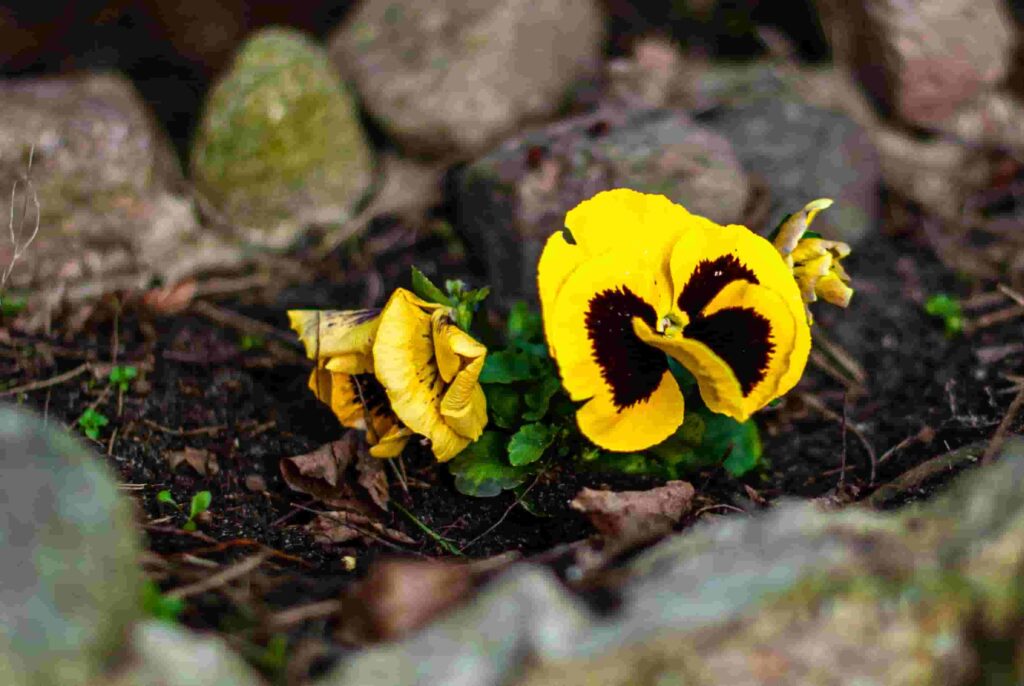
To plant pansies successfully, follow these guidelines:
- Timing – Pansy plants are cool-season annuals, so it’s best to plant them in early spring or late fall for optimal growth.
- Spacing – Place pansy seedlings or transplants 6 to 9 inches apart to allow for proper air circulation and prevent overcrowding.
- Planting Depth – Dig a hole slightly larger than the root ball and place the pansy at the same depth as it was in the container.
Watering and Fertilizing
Proper watering and fertilization are crucial for the health and vitality of pansies:
- Watering – Keep the soil evenly moist, but avoid overwatering as it can lead to root rot. Water pansy plants at the base to prevent wetting the foliage.
- Fertilizing – Apply a balanced, slow-release fertilizer at planting time and supplement with liquid fertilizer every 2 to 3 weeks during the growing season.
Pansy Care and Maintenance
Maintaining healthy and beautiful pansies requires regular care:
- Deadheading – Remove faded flowers to encourage continuous blooming and prevent seed production.
- Mulching – Apply a layer of organic mulch around pansy plants to retain moisture, suppress weed growth, and regulate soil temperature.
- Pruning – Trim back leggy growth or damaged foliage to promote bushier, healthier plants.
Dealing with Pests and Diseases
While pansies are generally resilient, they can still be susceptible to certain pests and diseases:
- Aphids – To manage aphid infestations, you can employ insecticidal soap or employ a powerful stream of water.
- Slugs and Snails – Set up barriers, like copper tape or diatomaceous earth, to protect pansy plants from slugs and snails.
- Powdery Mildew – To prevent powdery mildew, make sure there is ample air circulation and refrain from watering plants from above.
Propagation Methods
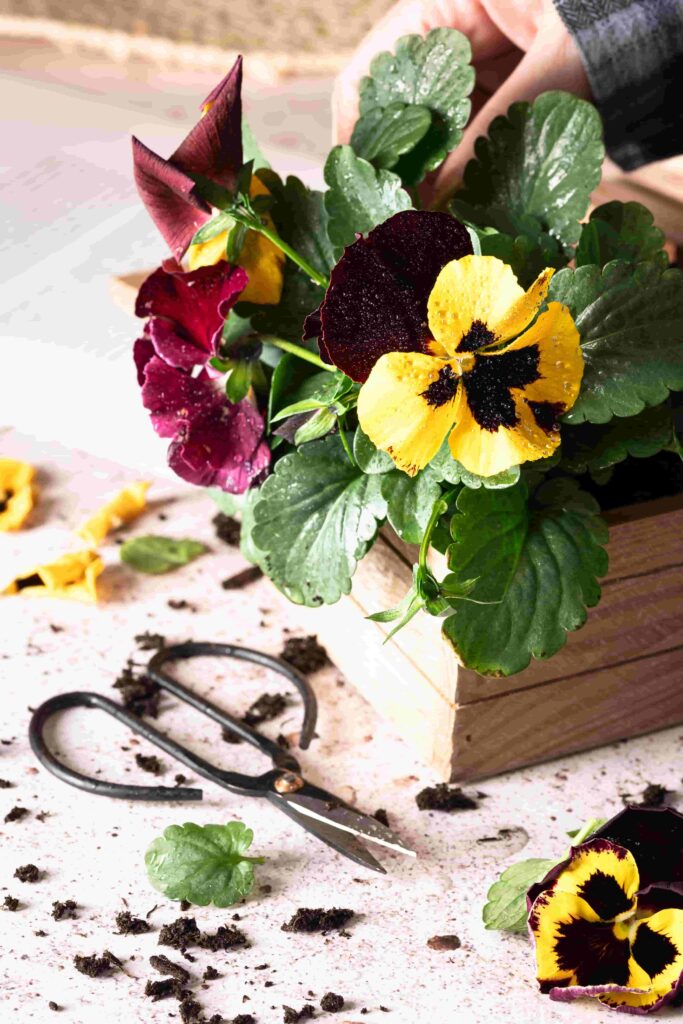
Pansies can be propagated through various methods, including:
- Seeds – Collect seeds from mature pansy plants and sow them in prepared soil in early spring or late summer.
- Cuttings – Take stem cuttings from healthy pansy plants and root them in a moist growing medium.
Companion Planting with Pansies
Pansies make excellent companions for many other plants, including:
- Daffodils – Pansies’ colorful blooms complement the cheerful yellow of daffodils.
- Tulips – Pair pansy plants with tulips for a vibrant and visually appealing display in early spring.
- Snapdragons – The upright growth of snapdragons provides a beautiful backdrop for cascading pansies.
Creative Uses for Pansies
Pansies are not limited to traditional garden beds. Consider these creative uses:
- Edible Flowers – Pansy petals can be used to garnish salads, desserts, and drinks, adding a touch of color and flavor.
- Floral Arrangements – Harvest pansies for charming floral arrangements or float them in a bowl of water for an elegant centerpiece.
- Pressed Flowers – Preserve the beauty of pansies by pressing them between pages or using them for crafting projects.
Pansies in Containers
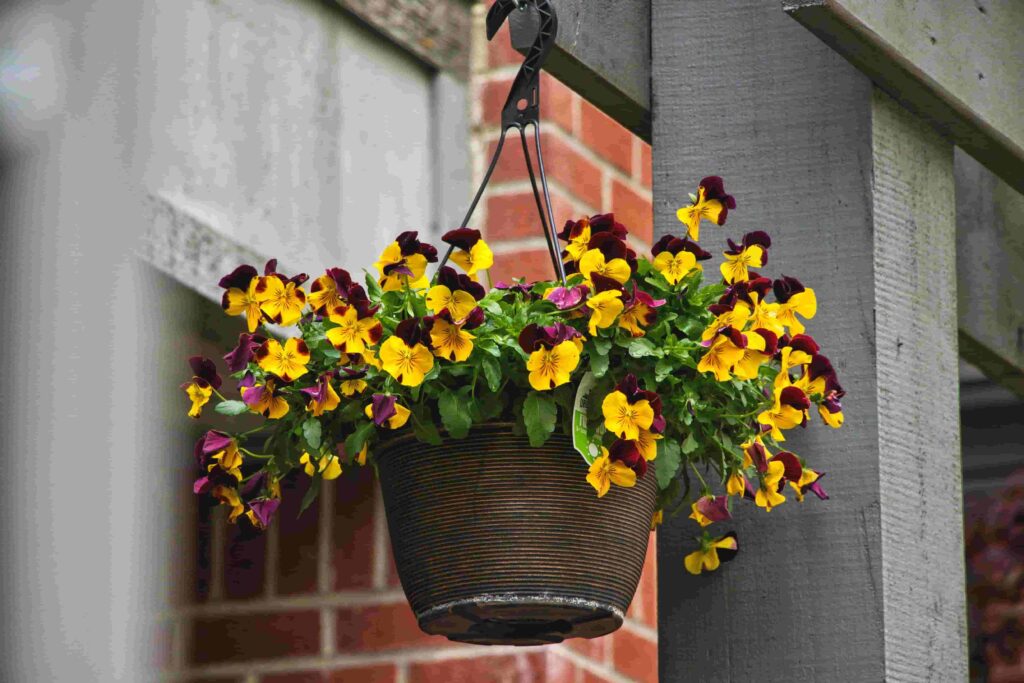
Pansy plants thrive in containers, making them an ideal choice for balconies, patios, and windowsills. Follow these tips for successful container gardening with pansies:
- Container Selection – Choose a container with drainage holes and sufficient depth for the pansy’s root system.
- Potting Mix – Select a potting mix that drains effectively while still retaining moisture without becoming overly saturated.
- Watering – Regularly inspect the soil’s moisture levels and provide water when the top inch of soil appears dry.
- Fertilizing – Apply a slow-release fertilizer specifically formulated for container plants according to package instructions.
- Deadheading and Pruning – Remove faded flowers and trim back leggy growth to maintain compact and bushy plants.
Seasonal Care for Pansies
Pansy plants require different care depending on the season:
- Spring Care – Monitor soil moisture, protect pansies from late frosts, and provide adequate air circulation to prevent diseases.
- Summer Care – Pansy plants don’t tolerate heat well, so consider providing shade or relocating them to a cooler area during hot summer months.
- Fall Care – Pansy plants thrive in cooler temperatures, so continue regular watering and fertilization to promote vigorous growth.
- Winter Care – In regions with harsh winters, protect pansies from freezing temperatures with a layer of mulch or move them indoors.
Common Problems and Solutions
Here are some common issues that pansy growers may encounter, along with solutions:
- Yellowing Leaves – Yellowing leaves can be a sign of overwatering, nutrient deficiencies, or root rot. Adjust watering and fertilization practices accordingly.
- Stunted Growth – Insufficient light, poor soil conditions, or overcrowding can cause stunted growth. Provide adequate light and space for healthy plant development.
- Fungal Diseases – Powdery mildew and gray mold are common fungal diseases. Improve air circulation and apply appropriate fungicides if necessary.
Conclusion
Pansy plants are an enchanting addition to any garden or container, offering a wide array of colors and charming “faces” that bring joy to the beholder. With proper care and attention, these resilient flowers will reward you with their beauty and vibrant blooms throughout the seasons. Whether you’re a gardening enthusiast or a beginner, give pansies a try and experience the delight they bring to your outdoor spaces.
Incorporate these captivating pansies into your garden, and you’ll be rewarded with a burst of color and beauty that will uplift your spirits every time you lay eyes on them. Happy gardening!
FAQs (Frequently Asked Questions)
Can pansies survive in hot climates?
Pansy plants prefer cool temperatures and may struggle in hot climates. Consider providing shade or planting them in early spring or fall for better results.
How often should I water my pansies?
Pansy plants require consistently moist soil, so water them when the top inch of soil feels dry. Avoid overwatering, as it can lead to root rot.
Can I grow pansies from seeds?
Yes, pansy plants can be grown from seeds. Sow them in prepared soil in early spring or late summer for best results.
What are some companion plants for pansies?
Daffodils, tulips, and snapdragons are popular companion plants that pair well with pansies.
Are pansy flowers edible?
Yes, pansy petals are edible and can be used to garnish salads, desserts, and beverages.

